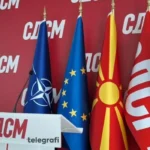Numerous strikes on Monday targeted the towns of Khan Younes, the new epicenter of the fighting, and Rafah, near the border with Egypt.
The IDF offensive continues, 67 days later. According to the Israeli authorities, the army is increasing its pressure this Tuesday against Hamas at “its breaking point” in the Gaza Strip where clashes are pushing the civilian population into exodus in desperate humanitarian conditions.
During the night, the Islamist movement Hamas reported violent clashes in the center of the Gaza Strip, and the Palestinian agency Wafa reported 12 dead and “dozens” injured in an air raid in Rafah.
Numerous strikes targeted the towns of Khan Younes, the new epicenter of the fighting, and Rafah, near the border with Egypt, where tens of thousands of people fleeing the violence are now massing.
“Hamas is at its breaking point, the Israeli army is retaking its last bastions,” Israeli Defense Minister Yoav Gallant said Monday evening in a televised address.
“The fact that people are surrendering (…) accelerates our success and that is what we want: to move forward quickly,” army chief of staff Herzi Halevi declared in Khan Yunis, in specifying that the army was “intensifying” its operations in the south while consolidating its presence in the north.
“Apocalyptic” situation
The humanitarian situation in the Gaza Strip is “apocalyptic”, warned Monday evening the head of European diplomacy Josep Borrell, for whom the level of destruction in the Palestinian territory is “more or less, even greater” than that of the Germany during World War II.
On Tuesday, the head of the World Health Organization (WHO) denounced controls imposed by the Israeli army on a medical convoy in the Gaza Strip, which he said cost the life of one of the injured.
The convoy under the leadership of the WHO and with the Palestinian Red Crescent was stopped twice at an Israeli army checkpoint near Wadi Gaza, which separates the north from the south of the Palestinian territory, going and returning.
For its part, Israel announced the establishment of an additional inspection point for humanitarian aid before entering the Gaza Strip through Rafah, saying this would “double” the amount of assistance entering the Gaza Strip. the Palestinian territory.
Located in Egypt, Rafah is the only entry point to the Gaza Strip that international organizations can use to deliver aid.
A conflict beyond borders
The war in Gaza continues to increase tensions in the region, particularly in the Red Sea, along the Lebanese-Israeli border, and even in Syria and Iraq, with two new attacks against international forces.
A missile fired from areas controlled by Houthi rebels hit the Norwegian-flagged oil-chemical tanker Strinda off the coast of Yemen without causing any casualties, the US military said overnight.
The Houthis had threatened on Saturday to attack any ship in the Red Sea heading towards Israel if the population of the Gaza Strip did not receive emergency aid. And a French frigate subsequently shot down two drones coming from areas of Yemen under Houthi control.
After new exchanges of fire Monday between Israel and Hezbollah, Benny Gantz, a member of the Israeli war cabinet, spoke with US Secretary of State Antony Blinken about the “increasing attacks” of the Lebanese Shiite movement and the need for Israel “to eliminate this threat”.
At the same time, the American government said it was “concerned” by reports from the Washington Post according to which Israel used American-made white phosphorous munitions during strikes in Lebanon in October.
This article is originally published on bfmtv.com






